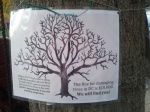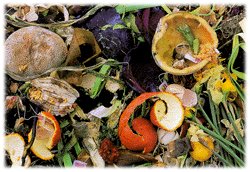While some weevils are destructive, there are also ones that fit under the “benefical” category. Such is the Rhinocominus latipes or mile-a-minute weevil.
As the name indicates, the mile-a-minute weevil’s diet is mile-a-minute, an invasive weed accidentally introduced in the 1930’s in York, PA and now found in 12 nearby states.
Although it doesn’t quite grow a mile a minute, this invasive weed can grow 6″ a day. A single plant can produce 2,000 seeds and can quickly cover shrubs and small trees. You’ll know it by it’s light green triangular leaves and sharp barbs along the stem – which is why it is also known as tearthumb.
The Rhinocominus latipes weevil has been used to significantly decrease mile-a-minute cover and seed production. And it is host-specific (only affecting mile-a-minute vines). A recent story in the Baltimore Sun describes how it is being used in Maryland.
So where can I get my hands on this handy bug?










